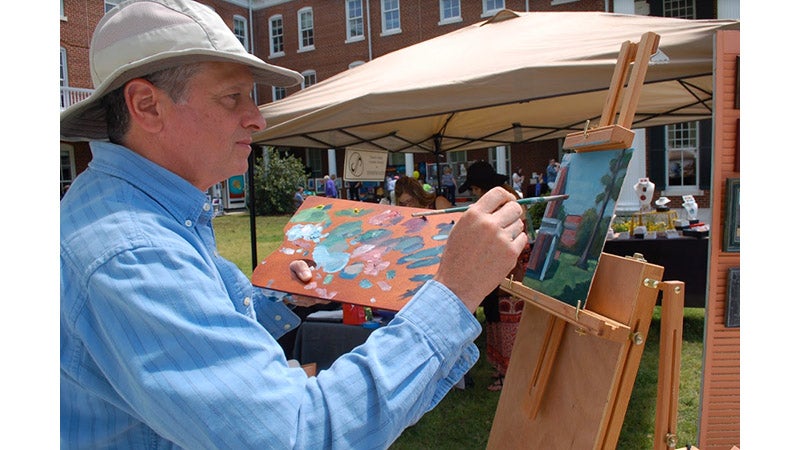White publishes revision of book
Published 10:58 am Thursday, January 4, 2018

- Charles White, owner and operator of The Informant, has recently published a revised and expanded edition of his book, “The Hidden and the Forgotten: Contribution of Buckingham Blacks to American History.” White stands with a poster of the book. (Photo by Emily Hollingsworth)
Charles White, Buckingham County Historian and Owner and Operator of The Informant, an African-American newspaper, recently published a revised and expanded edition of “The Hidden and the Forgotten: Contributions of Buckingham Blacks to American History,” first published more than 30 years ago.
Describing the accomplishments and challenges faced by African-American people in the county, the book now includes an expanded segment on educators and schooling in Buckingham and African-American soldiers who had served during and after World War I.
White said he and Margaret, his wife, had been running out of copies of the first edition of the book, published in 1985.
When he contacted the publishing company, a representative had told him they no longer had the materials used to publish his first book and that they had only what they had stored digitally.
White took the disappointment as an opportunity.
“I was better off doing what I wanted to do for a long time,” White said, which would be to reprint the book with more materials he had gathered from libraries across the commonwealth.
The expanded book was published by Farmville Printing, and White said they had 200 copies of the book delivered to them.
White received the books on the Thursday before Christmas. Since then, he said copies have been selling quickly.
“I told (Jon Marken, editor,) he might have to make some more copies,” White said.
White will be holding a book signing for the revised and expanded edition of the book at the Buckingham Branch Library on Saturday from noon to 3 p.m.
One segment of the revised and expanded edition highlights educators who had taught African-American children in Buckingham during segregation in the 20th century.
“I was one of them,” White said, pointing to a photo of himself in the book. White had taught building grades to students in Buckingham County.
White, nearly 88, said many of the teachers pictured are alive and still reside in Buckingham County.
Another segment relating to education includes additional photos of one-room schoolhouses where African-American children were educated during segregation.
White said his wife attended Union Grove School. The one-room schoolhouse is now part of the Historic Buckingham Village.
“Most of (the students) only had one teacher for all grades,” White said.
Another segment of the book includes pages of photos of African-American people who had been slaves in the 1800s.
White said a segment of the book includes African-American soldiers from Buckingham who had fought in World War I, World War II and the Korean War.
A page from the book details veterans from the Vietnam War who had been injured. White said he had taught six of the seven men pictured.
White also noted photos of a number of plantations in Buckingham County and the disturbing history of slavery in the county. White said cemeteries for slaves had been found at the plantation. White estimates that there could be as many as 400 people buried at one plantation but said the sites may only have one gravestone. The Variety Shade Plantation, White said, had two gravestones.
“All you would see is a depression in the ground,” White said about the unidentified people buried there.
He said what motivates him to pursue the history of African-American people in Buckingham County is the reaction from those who see the expansive history and accomplishments of those who live there. This includes the reaction of learning that Carter G. Woodson, one of the first scholars to study African-American history and considered the father of Black History, was born in Buckingham County, in New Canton.
“People are shocked to see this,” White said about the response from readers of the book, both of the first edition and of the revised edition.
His aim is to make sure that the people pictured, from the 1800s to the present day, are not forgotten.
“I had someone say to me, ‘Nobody in Buckingham has done anything,’” White said. “I said, ‘What are you talking about? You don’t know about it.’”





